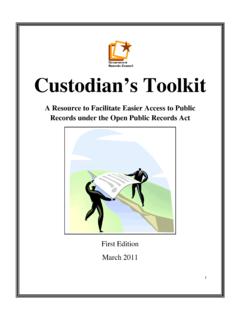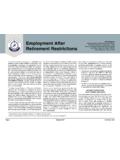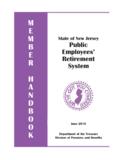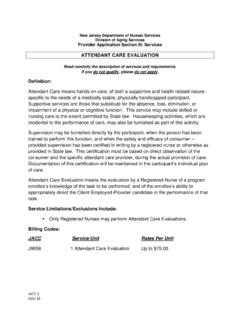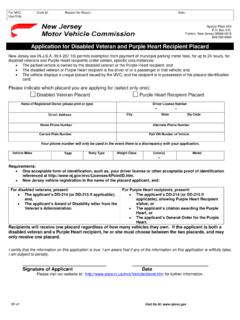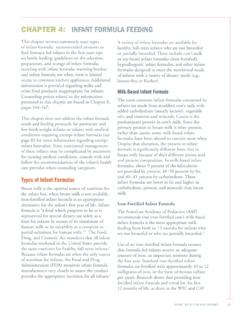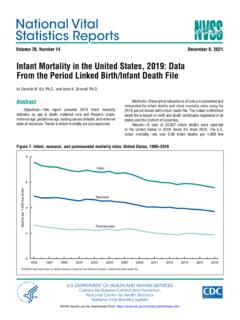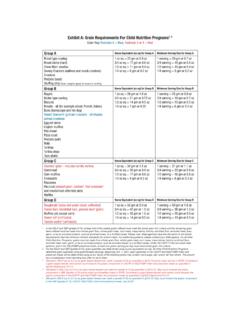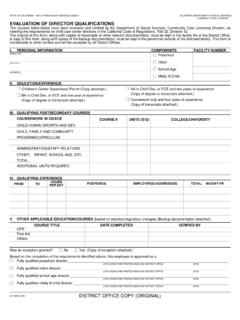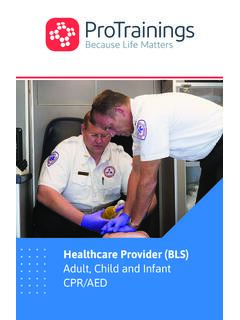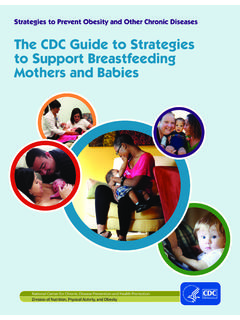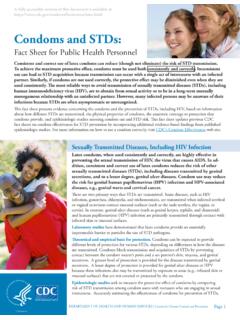Transcription of Per- and Polyfluoroalkyl Substances (PFAS) in Drinking Water
1 Per- and Polyfluoroalkyl Substances (PFAS) in Drinking Water Drinking Water Facts: General information PFAS are a large group of manmade chemicals which repel Water and oil and are resistant to heat and chemical reactions. Because of these properties, they have important industrial and commercial uses. PFAS are used in the production of some non-stick cookware, in waterproof and stain proof coatings, in leak-proof coatings on food packaging materials, in fire-fighting foams, and other applications. PFAS can enter Drinking Water through industrial release to Water , air, or soil; discharges from sewage treatment plants; land application of contaminated sludge; leaching from landfills; and use of certain fire-fighting foams.
2 Four types of PFAS have been found in the blood (serum) of greater than 98% of the United States population. These long-chain PFAS build up and stay in the human body for many years. The levels decrease very slowly over time after exposure is reduced or stopped. PFOS: perfluorooctane sulfonate PFOA: perfluorooctanoic acid PFNA: perfluorononanoic acid PFHxS: perfluorohexane sulfonate Exposure to PFAS PFOA, PFOS, and PFNA dissolve in Water . If Drinking Water is contaminated, it is a primary source of exposure to PFAS as compared with other background exposure sources.
3 Other sources of PFAS exposure include food, food packaging, consumer products, house dust, indoor and outdoor air, and workplaces where PFAS are used or made. Exposure to PFAS in Drinking Water is primarily from ingestion of the Water and food prepared with the Water . PFAS are not removed from Water by boiling. Exposure to PFAS through household uses of Water such as showering, bathing, laundry, dishwashing, and rinsing produce is not significant. Health effects of PFAS Some studies of the general population, communities with PFAS contaminated Drinking Water , and exposed workers suggest that exposure to PFAS increases the risk of a number of health effects.
4 Health effects from PFAS are observed even within the general population without exposure to PFAS from contaminated Drinking Water . The most consistent human health effect findings for PFOA and PFOS the most well studied of the PFAS types are increases in serum cholesterol and uric acid levels in the blood and decreased antibody response following vaccination, as well as increased blood levels of some liver enzymes for PFOA. Although not as well studied, PFNA appears to increase blood levels of cholesterol and some liver enzymes.
5 Human health effects are generally consistent with the toxicity of PFAS observed in laboratory animals. PFOA and PFOS caused tumors in rodents, while PFNA has not been tested for this effect. In humans, PFOA exposure was associated with a higher incidence of kidney cancer in both the general population and in a community with substantial levels of PFOA in Drinking Water , and with testicular cancer in the community with contaminated Drinking Water . The Centers for Disease Control and Prevention s Agency for Toxic Substance Disease Registry (CDC/ATSDR) is conducting the PFAS Multi-site Study, to learn more about the relationship between PFAS exposure and health outcomes.
6 This work is taking place across seven communities exposed to PFAS-contaminated Drinking Water . Work is ongoing, and results are pending. To learn more visit Consumer, Environmental and Occupational Health Service Environmental and Occupational Health Surveillance Program Continue to Page 2 Updated November 2021 Continue to Page 3 Impact of PFAS on children Infants and children consume more Water per body weight than older individuals, so their exposure may be higher than adults when Drinking Water is contaminated with PFAS.
7 They may also be more sensitive to the effects of PFAS. In humans, exposure to PFAS before birth or in early childhood may result in health effects including decreased birth weight, decreased response to vaccinations, and increased risk of infectious disease. In laboratory animals, some PFAS cause developmental delays. What are the NJ Drinking Water Standards for PFAS? In 2018, NJ became the first state to establish an enforceable Drinking Water standard for a PFAS chemical when it set a Maximum Contaminant Level (MCL) for PFNA.
8 MCLs for PFOA and PFOS followed in 2020. PFNA 13 ppt PFOA 14 ppt PFOS 13 ppt _____ __ _____ Abbreviations: ppt=parts per trillion; ppt = ng/L = nanograms per liter Should I drink bottled Water when I learn PFAS are in my Drinking Water ? PFOA, PFOS, and PFNA build up in the body over time, and it takes many years for the levels of these PFAS in your body to decrease after exposure has ended. If PFAS is present in your Drinking Water , using bottled Water or a home Water filter designed to remove these PFAS will reduce exposure.
9 When PFAS are above the NJ Drinking Water standard in a Drinking Water supply: For bottle-fed babies: Bottled Water should be used to prepare infant formula. Bottled Water should also be used when giving infants plain Water and to prepare juice made from concentrate for infants. For nursing (breastfed) babies: PFAS are present in breast milk and can be transferred to nursing babies. Despite this exposure, mothers who are breastfeeding should continue to nurse. The extensive information on the health benefits of breastfeeding suggests that benefits of breastfeeding outweigh potential risk of additional PFAS exposure.
10 For pregnant women, nursing women and women considering or planning on having a child: Switching to bottled Water or using a home Water filter for Drinking and cooking will reduce PFAS exposure. However, PFAS are slowly excreted from the body. Therefore, risk reduction will not be immediate, as exposure to the fetus and nursing infant is influenced by the mother s past exposure. For older children and adults: If a public Water utility notifies you that a PFAS exceeds the NJ MCL, they are required to promptly take actions to reduce these levels.
